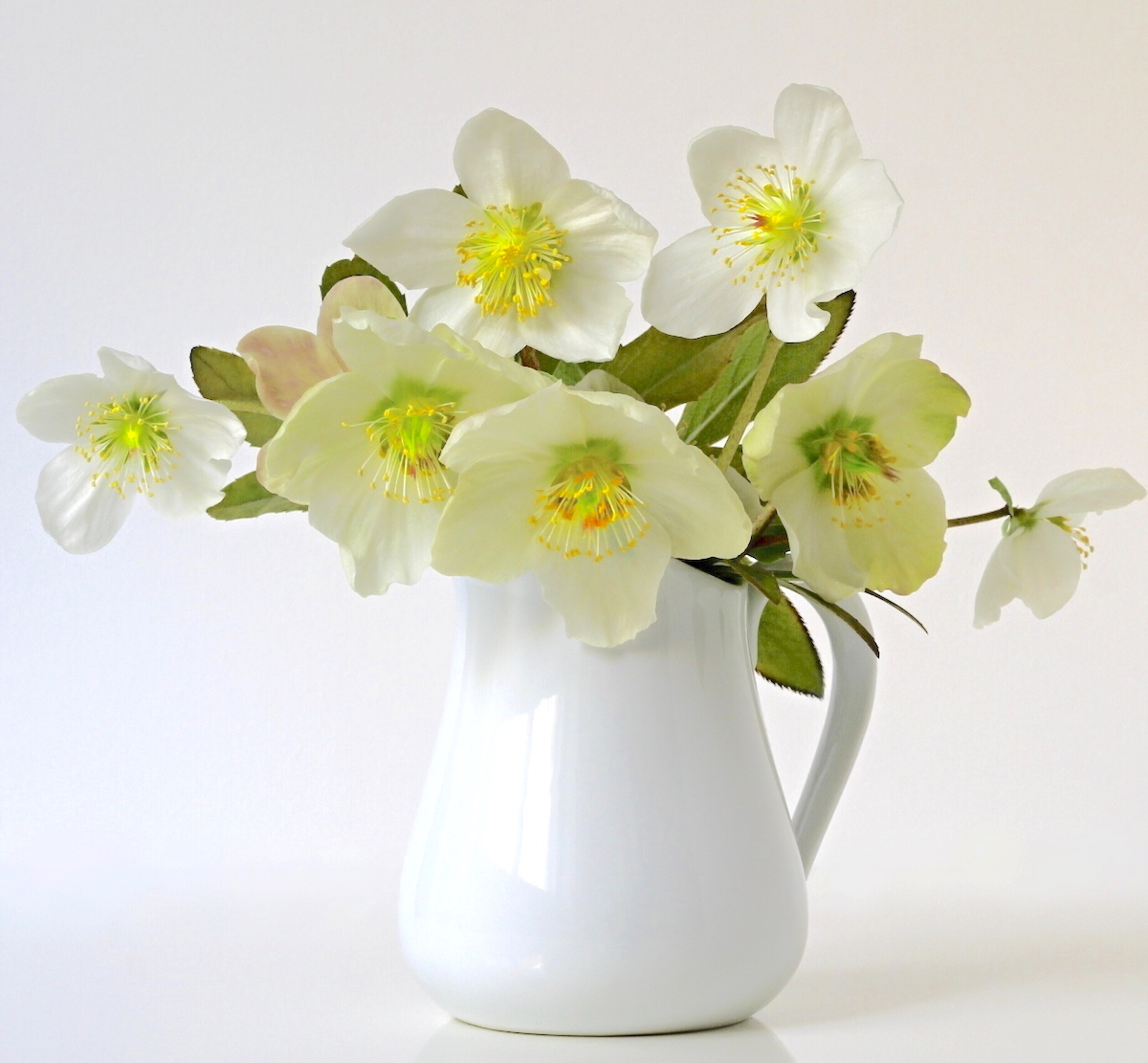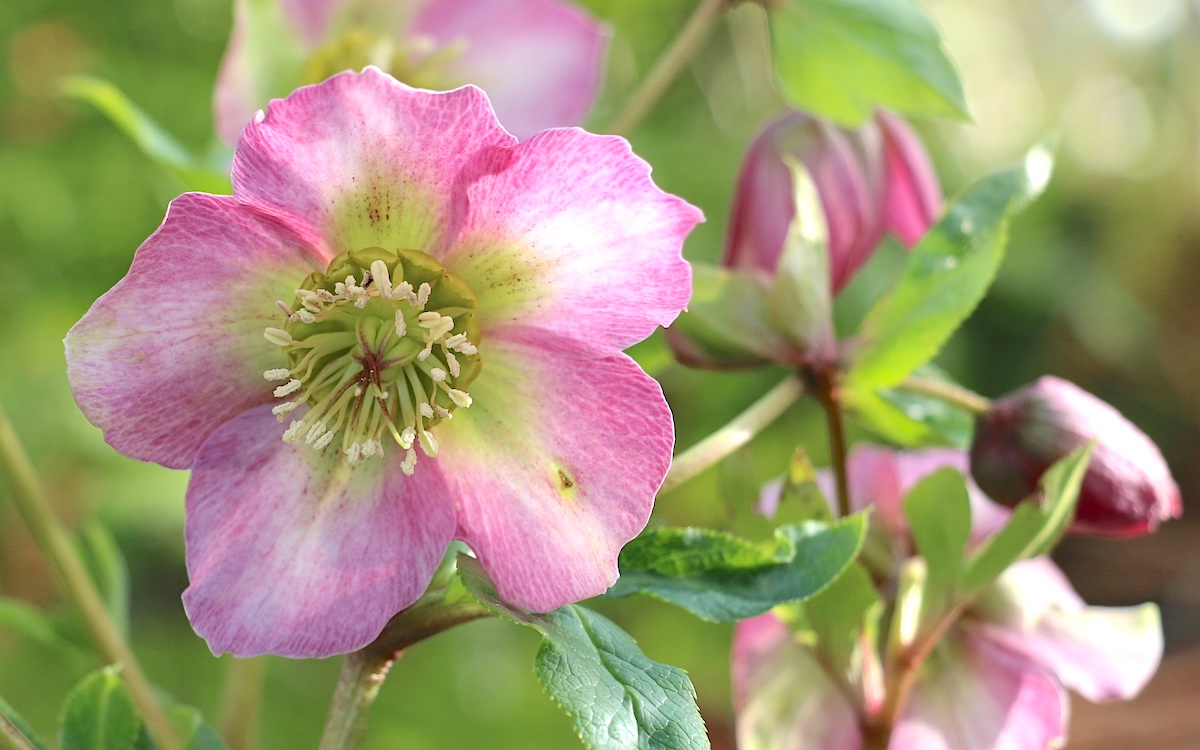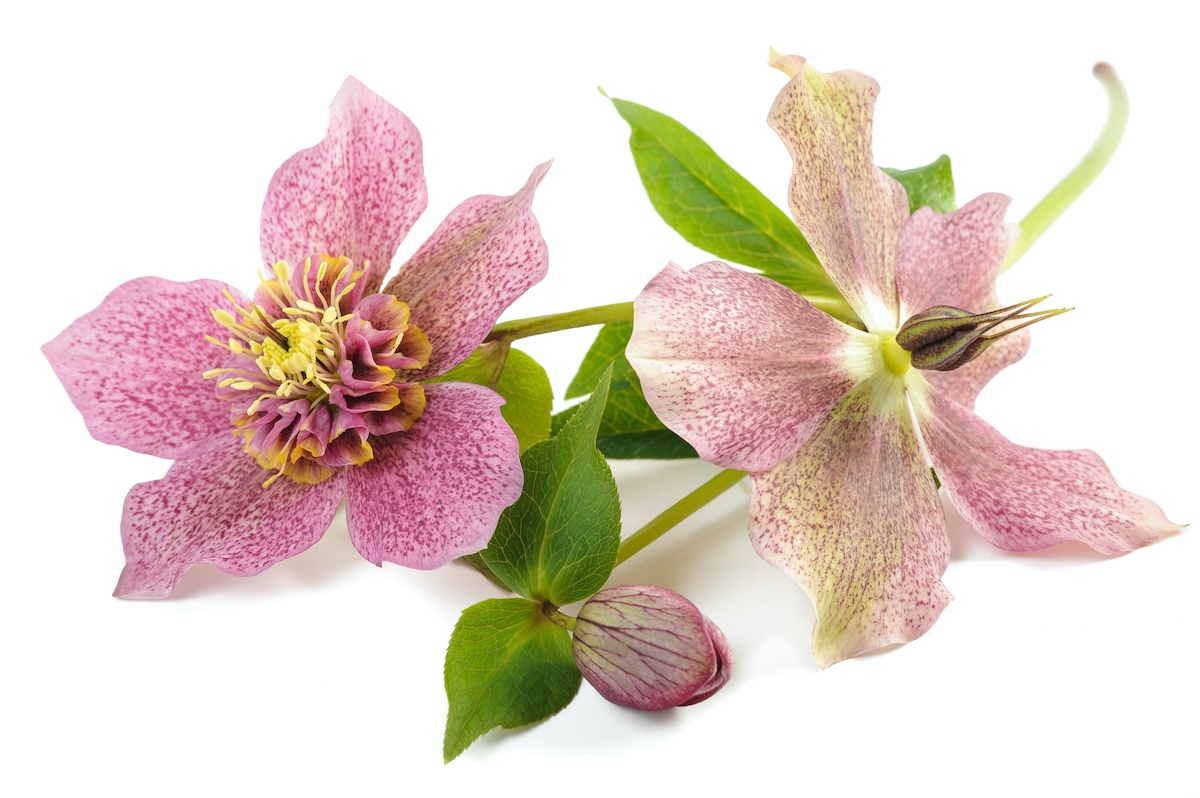
Photo by Nikolay Kurzenko | Shutterstock
WHAT ARE LENTEN ROSES?
The Helleborus x hybrids, or Lenten rose, was given its nickname because it blooms from February to April—that 40-day period between Ash Wednesday and Easter known as Lent. Just when the winter doldrums begin to set in, this glorious plant springs to life—a burst of light and hope echoing the promise of resurrection in the midst of darkness.
Although these particular hellebores resemble wild roses, they are not true roses. They belong to the Ranunculacaea family. The most widely known Lenten rose has rich dark-green foliage and light yellow-green to vibrant red petals. However, there are many varieties, and colors can range from a deep blood-red to pure white and subtle variations in between. The bloom has five petals surrounding a ring of small, cuplike pods. Unlike most flowers, the sepals don’t fall but hold on until spring arrives.

Photo by Ivora Obrazy | Shutterstock
The foliage and flowers of the Lenten rose are perfect for cut-flower arrangements. When cutting a stem from a plant, be sure to cut at an angle and then cut vertically into the stem about 1 inch. This will help the stem and flower absorb more water and survive for at least a week or longer.
GROWING LENTEN ROSE
- Culture: Plant a Lenten rose in rich, loose, woodsy soil, and fertilize in early spring. This slow-growing plant dislikes being disturbed and will be slow to recover when moved.
- Light: Heavy to light shade
- Moisture: Prefers moist, well-drained soil but is adaptable to drier situations
- Hardiness: Zones 4–9, remains evergreen from Zones 6–9
- Propagation: Division in late summer or autumn is the most common lenten rose propagation method. Hellebores can also be grown from seed but take three years to bloom.
LENTEN ROSE VARIETIES TO CONSIDER

Photo by Jackie Tweddle
- ‘Red Lady’: single petal, deep red
- ‘Pink Lady’: single petal, white with blushed pink
- ‘Winter Queen’: single petal with red, lavender to pink petals
- ‘Mrs. Betty Ranicar’: heavy double bloom, snow white
CUTTING HELLEBORES FOR ARRANGEMENTS

Photo by Scisetti Alfio
To get Lenten rose blossoms to last for longer than a day in an arrangement, you need to cut the flowers at the right time. The freshly-opened blossoms loaded with stamens will most likely wilt and hang their heads. Cut hellebore flowers when they have dropped most of their stamens and are starting form a seed pod at the center of the blossom. Their colors may have faded just a bit at this stage, but the flowers will usually last more than a week.
LENTEN ROSE ARRANGEMENTS
Hellebores are not only a beautiful harbinger of spring, but a hardy cut flower with a vase life of 10-14 days. Below are some of our most popular arrangements that incorporate Lenten rose flowers.

Photo by Natalia Greeske








